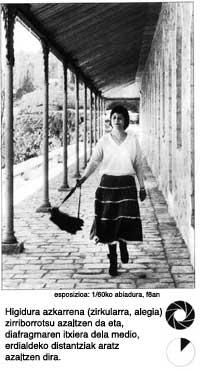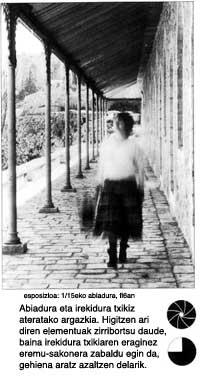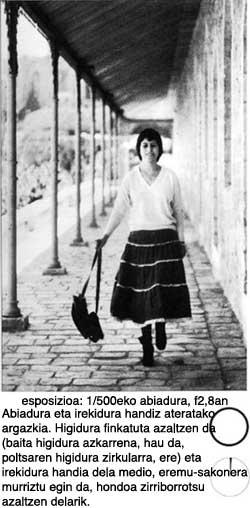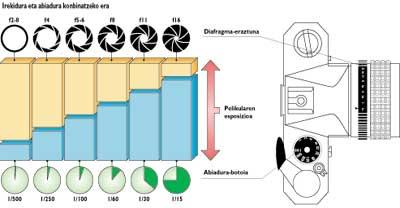Purity control (III): opening and speed

This section shows the diaphragm and shutter combinations mentioned in the SHUTTER.
The film must contain the right amount of light so that the image is clearly reduced, avoiding overexposure and underexposure.
Under normal lighting conditions, it is not very important to use the high shutter speed with the proper opening or vice versa. In both cases, the film will receive the same amount of light, that is, it will have the same exposure (a container will be filled with the same amount of water for a short time, with a wide or long funnel and a narrow funnel).
In the diagram accompanying these lines we can see the relationship between the positions of the diaphragms and the shutter speeds.
The selected combination depends on the subject to be photographed and the desired result.
But it does not always depend on these two conditions. Sometimes the combination between aperture and speed is determined by the level of illumination. That is, if there is very little light only it will be possible to use low speeds (and large openings), and if there is a lot of light, it will be necessary to use high speeds (and small openings).

(Next time we'll talk about how to calculate the exposure.)
Once the exhibition is chosen, you must decide how you want to interpret the subject. Keep in mind how you can notice an area with depth of field and the movements of the subject and the camera.
In this diagram we can see how to combine speed and opening while maintaining proper exposure. If every step of the aperture scale is followed by speed, the film receives the same amount of light. Therefore, if the photometer (or film instructions) suggests any of these combinations, you can choose any other if you want to change the depth of field or purity. If only one of the two variables is modified (without compensating the other), the exposure changes. On the other hand, there are lower speeds (up to 1 s) that do not appear in this diagram and that combine in the same way with the opening.
In general, the controls appear as those in the image. Sometimes, these controls are usually contiguous rings that, once chosen the combination of both, move simultaneously.


VOCABULARY overexposure. It is meant by excessive exposure to sensitive material. As a result, it increases density and decreases contrast. subexhibition. This is too short an exposure to the photographic image. This reduces density and contrast. exposure. Result between light intensity and exposure time. The first is controlled by the aperture of the diaphragm and the second by the shutter speed. |
Law of reciprocity According to this law: exposure = intensity x time. Intensity, amount of light and time, being the interval in which this amount of light acts on the photographic emulsion. However, the sensitivity of photographic emulsions has limits and failure of this law (THE ERROR OF THE LAW OF RECIPROCITY) in a very long time (above 1 s) and short (below 1/8,000 s). Therefore, we must be careful and use in these cases higher than theoretically calculated exposures. For this we will have to increase the intensity or the time. |
Buletina
Bidali zure helbide elektronikoa eta jaso asteroko buletina zure sarrera-ontzian











